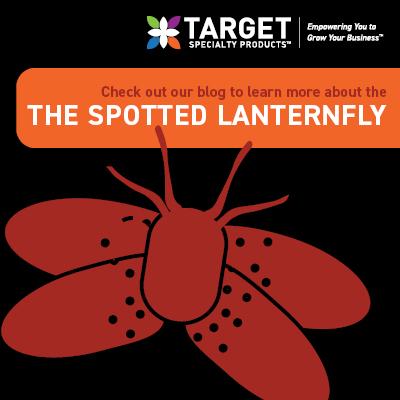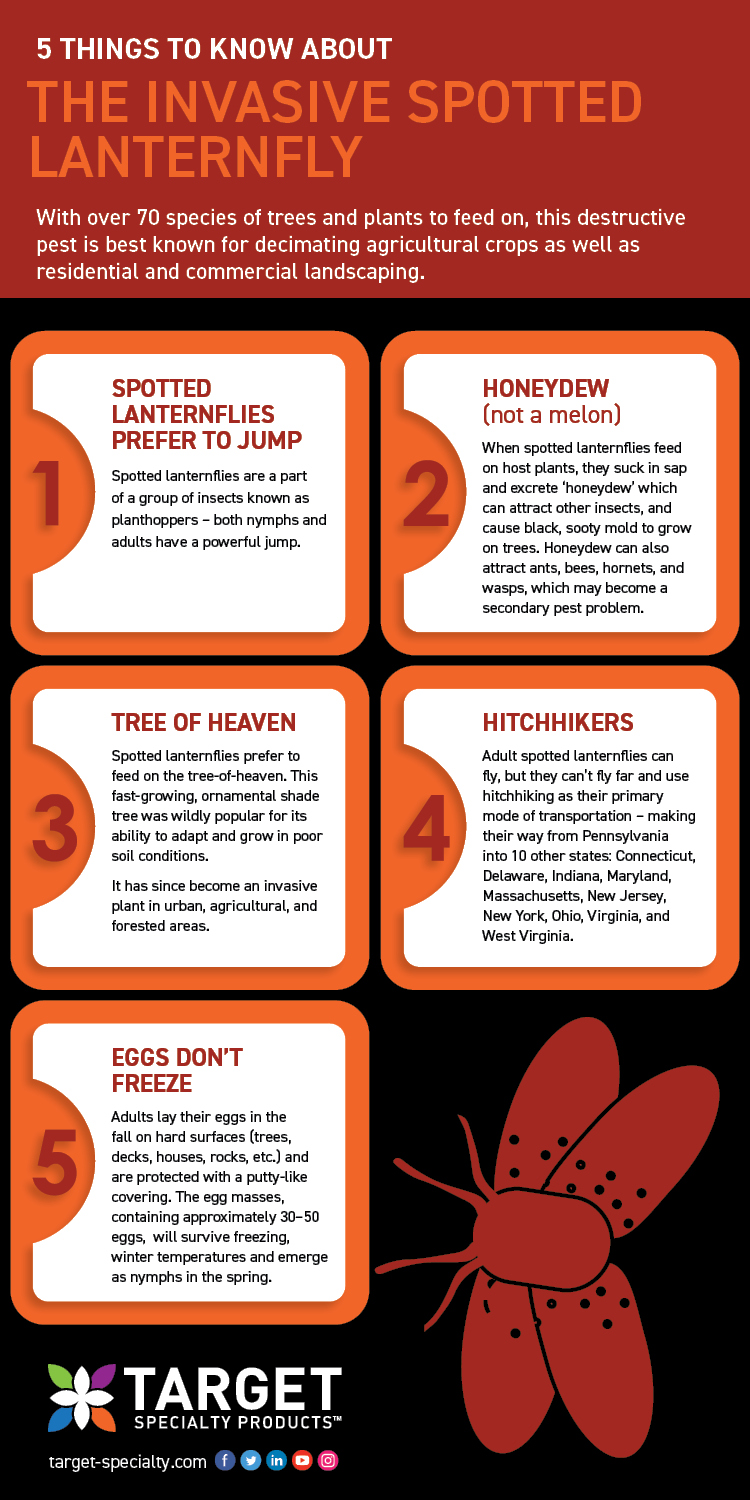
With over 70 species of trees and plants to feed on, this destructive pest is best known for decimating agricultural crops as well as residential and commercial landscaping.
- PREFER TO JUMP
Spotted lanternflies (SLF, Lycorma delicatula) are a part of a group of insects known as planthoppers – both nymphs and adults have a powerful jump. - HONEYDEW (not a melon)
When spotted lanternflies feed on host plants, they suck in sap and excrete ‘honeydew’ which can attract other insects, and cause black, sooty mold to grow on trees. Honeydew can also attract ants, bees, hornets, and wasps, which may become a secondary pest problem. - TREE OF HEAVEN
Spotted lanternflies prefer to feed on the tree-of-heaven (Ailanthus altissima). This fast-growing, ornamental shade tree was wildly popular for its ability to adapt and grow in poor soil conditions. It has since become an invasive plant in urban, agricultural, and forested areas. - HITCHHIKERS
Although adult spotted lanternflies can fly, they can’t fly far and use hitchhiking as their primary mode of transportation – making their way from Pennsylvania into 10 other states: Connecticut, Delaware, Indiana, Maryland, Massachusetts, New Jersey, New York, Ohio, Virginia, and West Virginia. - EGGS DON’T FREEZE
Adults lay their eggs in the fall on hard surfaces (trees, decks, houses, rocks, etc.) and are protected with a putty-like covering. The egg masses, containing approximately 30–50 eggs, will survive freezing, winter temperatures and emerge as nymphs in the spring.
For more tips on controlling spotted lanternfly, as well as training and identification, please browse our article on spotted lanternfly control.


